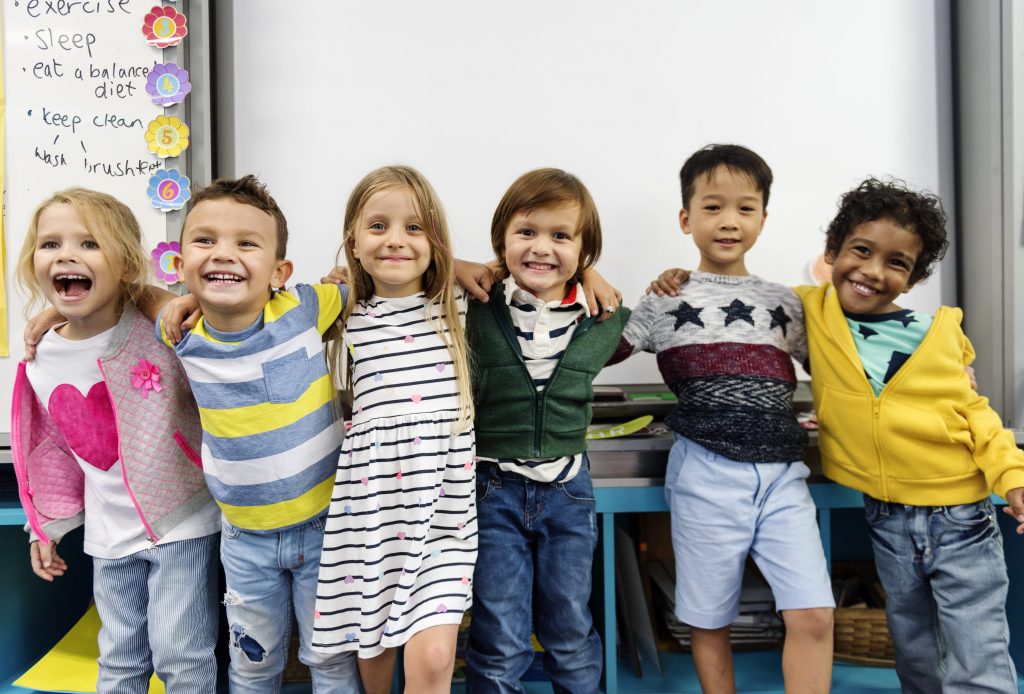
Delayed enrollment, disruptions, contingency plans: COVID-19 has created an unusually diverse 20201-22 kindergarten class.
By Jennifer Torres
While children always bring a wide range of varying early childhood experiences with them as they enter kindergarten, the pandemic has amplified that variety for the upcoming school year. Some families chose to delay enrollment of their kindergarten-aged children, magnifying the age differences teachers will see at a time when children grow and develop new skills and abilities so quickly.
Whether they delayed enrollment or not, families were forced to find creative ways to solve their childcare needs as preschool centers were closed and enrollment in programs was reduced. The reality is that economic differences and varying accessibility to support systems impacted the options families had available to them. Some families created learning pods, others moved grandparents into their home to support their children, and others looked to home-based childcare providers for help. The most economically advantaged families were able to work from home and manage their child’s learning with private tutors and creative online classes, while those with fewer resources struggled to maintain jobs that required them to be onsite, with care coordinated between relatives, friends, and providers. With many preschools shut down and parents worried about the health of their children, many families chose to skip PreK schooling altogether.
As a result of these disparities, children entering kindergarten will begin with an even wider range of past experiences than usual—and that will mean varying levels of vocabulary, content knowledge, and academic skills. The challenge for educators will be learning how to build upon all of the skills children learned this past year, whether they relate to navigating technology, working independently, demonstrating self-control, or mastering foundational academic skills.
Meeting Students Where They Are
Personalizing education to meet the needs of all learners will be essential as children go back to school. Educational technology is a powerful tool that can be used to support teachers in their efforts to personalize instruction. A highly qualified teacher can use the data provided by the use of digital solutions to guide and improve classroom instruction and small-group interventions.
Technology that uses a self-paced, mastery-based approach to provide students with instruction and practice for foundational skills will help to fill in gaps for all children. Those ready to move ahead in particular areas will be able to do so. Students needing repeated instruction or more opportunities for practice will get help with specific skills. Teachers can group students according to their areas of need and help them master skills.
This targeted practice will help all students continue to progress on their own path of learning and assist teachers with better understanding of the areas of opportunity where they can find ways to motivate and reinforce learning with their students. Teachers can also then use their class time to help students learn to communicate with each other and collaborate in new ways.
Emphasizing Social and Emotional Learning
Kindergarten is a time for children to learn not only important early literacy and numeracy skills, but also how to be thoughtful and supportive members of a classroom community. Research points to the importance of establishing a classroom culture built on love and trust. Children learn best when they feel safe and their brains can relax into the learning.
Kindergarten teachers are experts at establishing routines and practicing them with the students in their classroom. This year, this social instruction will be an even greater challenge than usual, since many of the entering kindergarteners have spent a year at home with little or no peer interaction.
Children may surprise teachers with new strengths such as technology use and working independently. They may also need much more support on foundational academic skills. It will be essential that teachers take the time to learn about each child, each family, and the needs that exist in their class. This will take time and preparation.
Teachers can design community-building activities for their class and their families. They can ask families to share what they learned about their child from the past year and work together to set goals for each child. Teachers will also need to build relationships with other teachers and support each other through this transition back to school. Leveraging the power of educational technology to cultivate connections with families will also help.
Teachers will need to spend more time establishing expectations and practicing interactions at a time when even many adults are finding themselves re-learning how to interact in social settings. Administrators will need to provide time and set goals appropriately to allow teachers to spend significant time on social-emotional learning.
This fall, teachers need to be prepared for an unusually wide variety of experiences, skills, and degrees of social-emotional development that children will bring to kindergarten. District and school administrators will need to be prepared to support teachers through harnessing digital tools, providing time and resources for SEL, and establishing clear avenues for ongoing family involvement.
Jenni Torres is Waterford.org’s senior vice president of curriculum and instruction. During 15 years in the classroom, Jenni was selected by the U.S. State Department as a Fulbright Exchange Teacher for Uruguay and was awarded Teacher of the Year honors at the school, county and district levels. She has led the design of Waterford.org’s new social and emotional learning curriculum and innovative Mentor app, designed to help parents engage more deeply and authentically with their child to learn skills at home. Jenni earned her master’s degree from the Harvard Graduate School of Education and her bachelor’s degree from the University of Maryland, College Park. You can connect with her on LinkedIn or follow her on Twitter.
